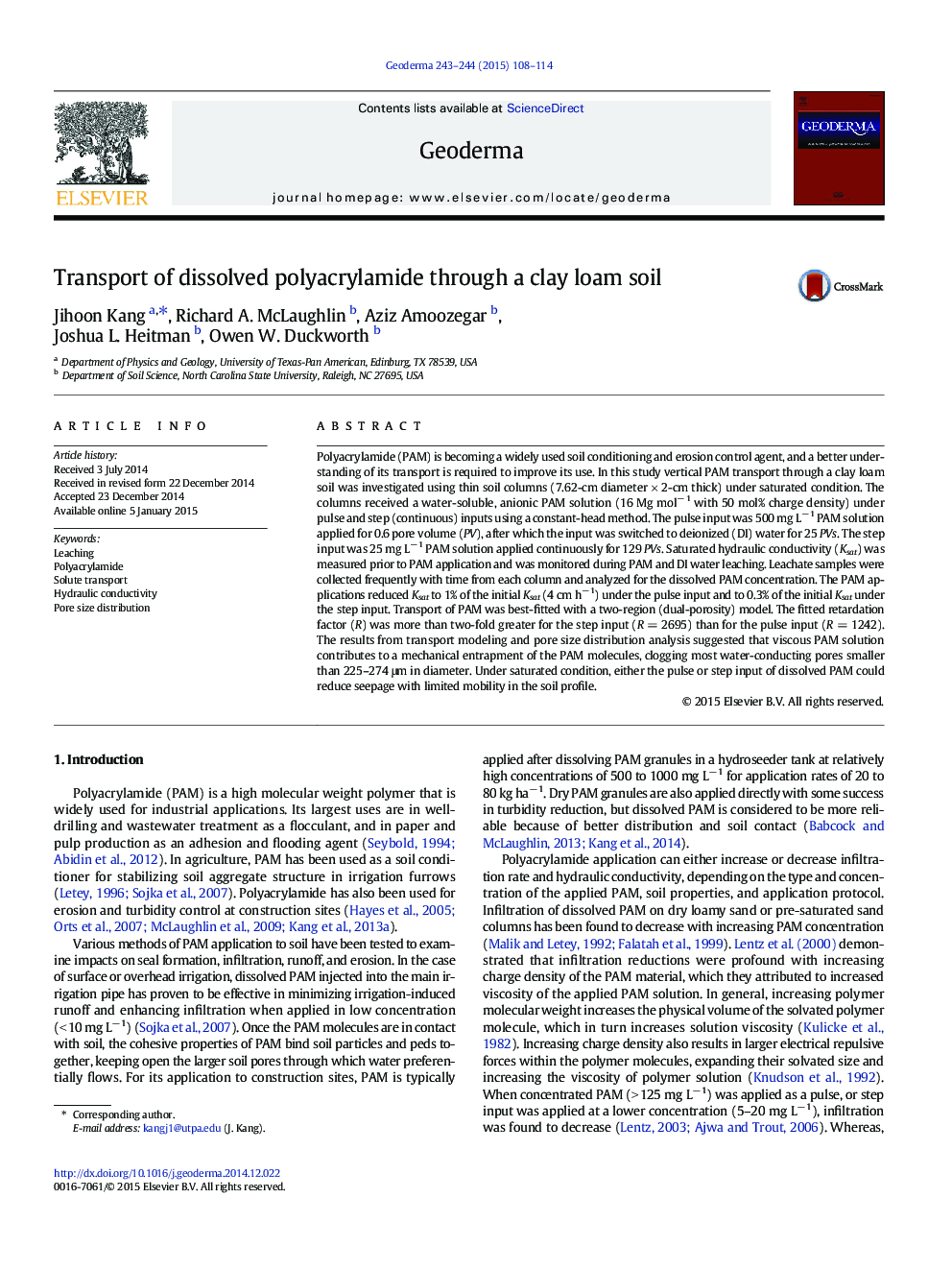| کد مقاله | کد نشریه | سال انتشار | مقاله انگلیسی | نسخه تمام متن |
|---|---|---|---|---|
| 4573209 | 1629464 | 2015 | 7 صفحه PDF | دانلود رایگان |
• Polyacrylamide solution greatly reduces saturated hydraulic conductivity in the treated soil (2-cm thick).
• The transport of dissolved polyacrylamide was strongly retarded and best-described by the two-region, dual-porosity model.
• The polyacrylamide applied under saturated condition acts as a seepage-inhibiting sealant in the receiving soil.
Polyacrylamide (PAM) is becoming a widely used soil conditioning and erosion control agent, and a better understanding of its transport is required to improve its use. In this study vertical PAM transport through a clay loam soil was investigated using thin soil columns (7.62-cm diameter × 2-cm thick) under saturated condition. The columns received a water-soluble, anionic PAM solution (16 Mg mol− 1 with 50 mol% charge density) under pulse and step (continuous) inputs using a constant-head method. The pulse input was 500 mg L− 1 PAM solution applied for 0.6 pore volume (PV), after which the input was switched to deionized (DI) water for 25 PVs. The step input was 25 mg L− 1 PAM solution applied continuously for 129 PVs. Saturated hydraulic conductivity (Ksat) was measured prior to PAM application and was monitored during PAM and DI water leaching. Leachate samples were collected frequently with time from each column and analyzed for the dissolved PAM concentration. The PAM applications reduced Ksat to 1% of the initial Ksat (4 cm h− 1) under the pulse input and to 0.3% of the initial Ksat under the step input. Transport of PAM was best-fitted with a two-region (dual-porosity) model. The fitted retardation factor (R) was more than two-fold greater for the step input (R = 2695) than for the pulse input (R = 1242). The results from transport modeling and pore size distribution analysis suggested that viscous PAM solution contributes to a mechanical entrapment of the PAM molecules, clogging most water-conducting pores smaller than 225–274 μm in diameter. Under saturated condition, either the pulse or step input of dissolved PAM could reduce seepage with limited mobility in the soil profile.
Journal: Geoderma - Volumes 243–244, April 2015, Pages 108–114
